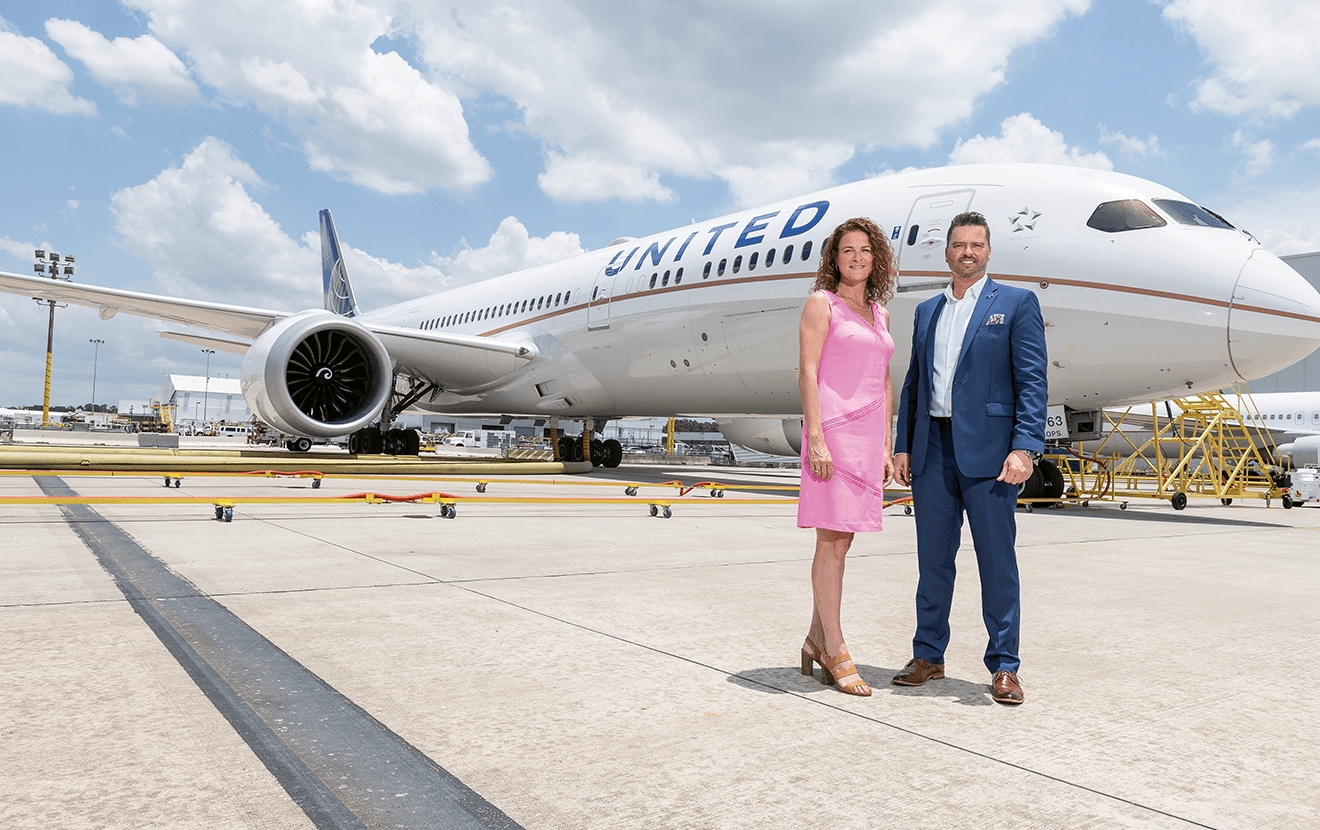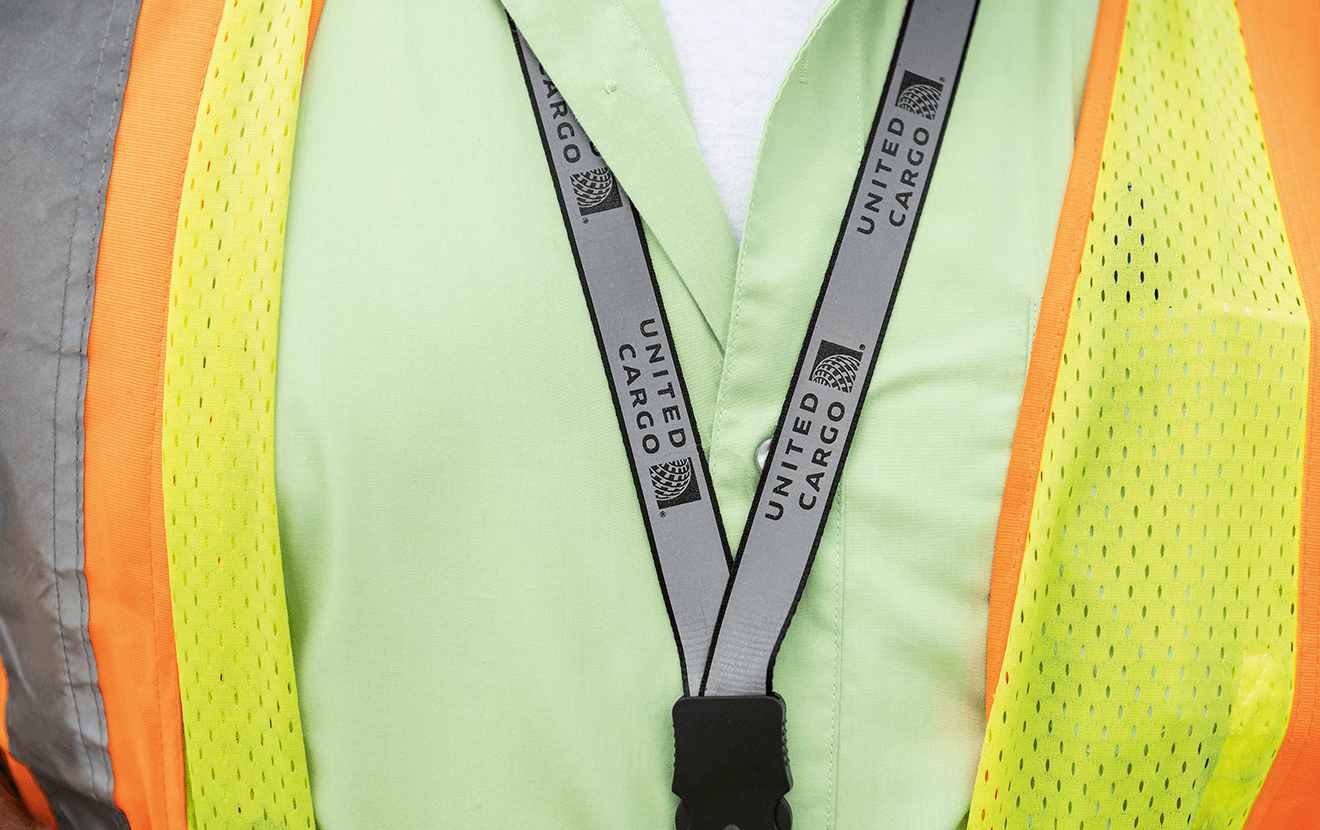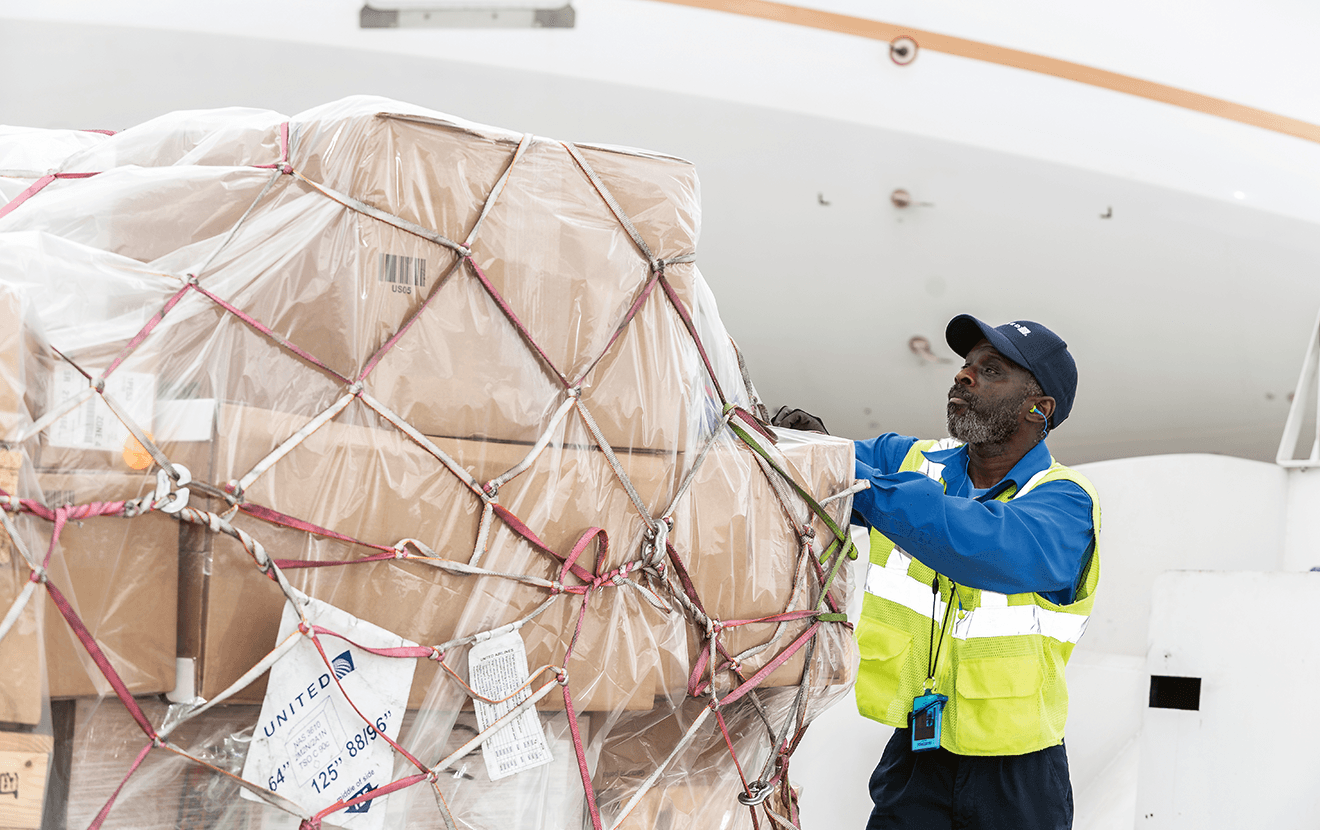
Growing together.
The sun is burning relentlessly, the thermometer is nudging the 40-degree mark. Extreme conditions for Alison Ricker and Rich Haus during the “planet” production out on the apron of George Bush Intercontinental Airport (IAH) in Houston. But also a good opportunity to demonstrate teamwork! Prompted by the photographer, both of them rush up for a quick mopping of their foreheads – and then they simultaneously switch to “portrait mode”. When the shoot is done, the two of them head back to the car, with the air-conditioner at full blast. The same goes for the next two shoots, with Alison Ricker and Rich Haus working effortlessly, hand-in-glove. It is a situation that seems tailor-made for these two managers: both have been instrumental in shaping the airfreight joint venture of United Airlines and Lufthansa Cargo. And today they are still involved in the evolution of this cooperative venture. The two airlines have been jointly selling their freight capacities on routes between Europe and the U.S. for a few months now.

“The teams work very well together, there is a sense of true partnership,” says Rich Haus, Senior Regional Sales Manager U.S. South for United Cargo. “Our cooperative venture is a fabulous mix of German engineering and the American ‘Can do!’ attitude,” says Alison Ricker, Joint Venture Manager USA for Lufthansa Cargo.
GREATER FLEXIBILITY, HIGHER SPEED.
GREATER FLEXIBILITY, HIGHER SPEED.
|
When the cooperative venture began in May 2018, the combined network of the two airlines included connections between the United States and – on the European side – Germany, the UK, Ireland and Italy. The network has been gradually expanded since and this roll-out will continue through the end of the year. “When the rollout is complete we will serve more than 250 stations in the United States and in Europe,” says Alison Ricker, who works out of Atlanta. This includes more than 20 destinations that have not previously been part of the Lufthansa Cargo network. For United Cargo, there will be about 50 new stations. “In total we will end up with around 1,500 new route options per week between airports in the United States and in Europe,” adds Rich Haus. “We provide greater flexibility to Lufthansa Cargo customers and to our own, often with enormous savings in time, too.” As it happens, the U.S.-based clientele of the two airlines is largely identical, as Alison Ricker explains. The only exceptions are forwarders and shippers with highly specialized requests, such as transportation of animals. |
“This means that having access to the capacities of the other airline is relevant in a great many cases.” Just how strong a partner Lufthansa Cargo has won soon becomes clear out on the scorching hot apron at Houston: in a span of just ten minutes three aircraft, all bearing the stylized globe logo on their tail fin, have landed within sight. By the end of 2018, United’s mainline fleet will consist of 768 passenger planes, two dozen more than at the end of 2017. What’s more, IAH is just one of the company’s seven hubs in the U.S. The others are Chicago, Denver, Los Angeles, New York/Newark, San Francisco and Washington D.C. Lufthansa Cargo customers in the United States who want to send ship ments across the Atlantic have many additional direct flight capacities in the spacious bellies of United’s wide-body aircraft available to them, thanks to the joint venture. “Houston – Paris, Los Angeles – London, Chicago – Edinburgh,” recites Alison Ricker, and bursts out laughing. “It seems they fly direct to the whole of Europe!” And it is true: there are a total of 25 new destinations, including Amsterdam, Hamburg, Madrid, Rome and Zurich. |

CUSTOMERS APPRECIATE THE CONVENIENCE.
“The main benefit for our U.S.-based freight customers is having access to the capacities of one of the world’s leading freight carriers,” says Rich Haus. “And here Lufthansa’s freighter connections, especially to Frankfurt, do play a major role.” Added to that are the belly capacities to Munich and, on board Austrian Airlines aircraft, to Vienna – each with onward flights within Europe. What is more, while United serves destinations in Europe exclusively via its own hubs, Lufthansa – partly with passenger jets, partly with freighters – departs from 14 other airports in the U.S., including Boston, Miami and Seattle. Not only in the U.S. but worldwide, airfreight customers all want the same thing: in addition to a dense network and the greater speed and flexibility that it provides, they want reliability and safety – and these are values that both Lufthansa Cargo and United Airlines stand for. “They also appreciate having a partner who is easy to work with,” says Haus. “And that is precisely what we are offering them!” adds Ricker. For example, joint cargo handling facilities have been established at key stations such as Munich; elsewhere there are coordinated transfer processes. One of the challenges to the cooperation which has been overcome is to be able to seamlessly offer customers the ability to book on the other partner’s capacity. “We quickly realized that we needed a platform that would allow our IT systems to communicate with each other and allow us to build up the shared booking functionality,” explains Rich Haus. “Developing this platform was the single biggest challenge.” The experts on both sides worked together very well, says Alison Ricker. “The performance of the teams is all the more remarkable in light of the fact that the level of IT standardization in the airfreight sector is quite low.”

There was yet another significant challenge that had to be overcome, according to Alison Ricker: “We are both major players with strong and valuable, yet different, corporate cultures.” This meant that agreeing on shared objectives was not always very easy. “But the teams involved here were always enthusiastic and convinced that we could grow together eventually.” She added that this had paid off. However, the status quo is still a long way from the final form this cooperation is going to take. “We’re now working on a joint customer survey, from which we hope to learn which aspects of the joint venture are already benefiting our customers, and which aspects we need to re-examine,” says Rich Haus. Continued development is definitely part of the plan, both Haus and Ricker add; it is envisaged to include special products and to expand the network.
